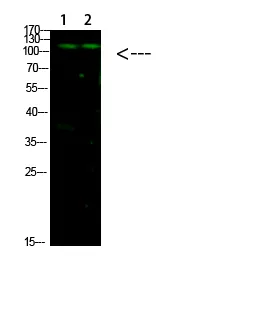
Size:50μL Price:$118
Size:100μL Price:$220
Size:200μL Price:$380
Application:WB,ELISA
Reactivity:Human,Mouse
Conjugate:Unconjugated
Optional conjugates: Biotin, FITC (free of charge). See other 26 conjugates.
Gene Name:GLI1 GLI
Summary
| Production Name | GLI-1 Rabbit Polyclonal Antibody |
| Description | Rabbit polyclonal Antibody |
| Host | Rabbit |
| Application | WB,ELISA |
| Reactivity | Human,Mouse |
Performance
| Conjugation | Unconjugated |
| Modification | Unmodified |
| Isotype | IgG |
| Clonality | Polyclonal |
| Form | Liquid |
| Storage | Store at 4°C short term. Aliquot and store at -20°C long term. Avoid freeze/thaw cycles. |
| Buffer | Liquid in PBS containing 50% glycerol, 0.5% protective protein and 0.02% New type preservative N. |
| Purification | Affinity purification |
Immunogen
| Gene Name | GLI1 GLI |
| Alternative Names | Zinc finger protein GLI1 (Glioma-associated oncogene) (Oncogene GLI) |
| Gene ID | 2735 |
| SwissProt ID | P08151 |
Application
| Dilution Ratio | WB 1:500-1:2000,ELISA 1:10000-1:20000 |
| Molecular Weight | 120kDa |
Background
This gene encodes a member of the Kruppel family of zinc finger proteins. The encoded transcription factor is activated by the sonic hedgehog signal transduction cascade and regulates stem cell proliferation. The activity and nuclear localization of this protein is negatively regulated by p53 in an inhibitory loop. Multiple transcript variants encoding different isoforms have been found for this gene. [provided by RefSeq, May 2009],disease:Defects in GLI1 may be a cause of breast cancer.,function:May regulate the transcription of specific genes during normal development. May play a role in craniofacial development and digital development, as well as development of the central nervous system and gastrointestinal tract. Mediates SHH signaling and thus cell proliferation and differentiation.,induction:Amplified in glioblastoma cells.,similarity:Belongs to the GLI C2H2-type zinc-finger protein family.,similarity:Contains 5 C2H2-type zinc fingers.,subcellular location:Tethered in the cytoplasm by binding to SUFU. Activation and translocation to the nucleus is promoted by interaction with STK36.,tissue specificity:Testis, myometrium and fallopian tube.,
Research Area
Hedgehog;Pathways in cancer;Basal cell carcinoma;
